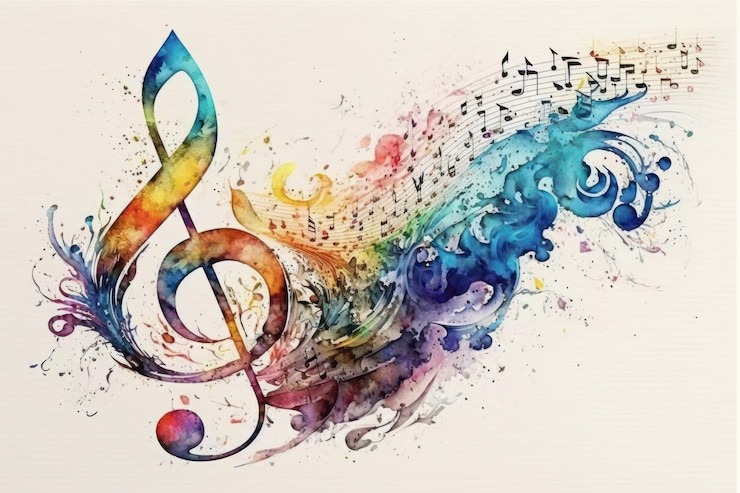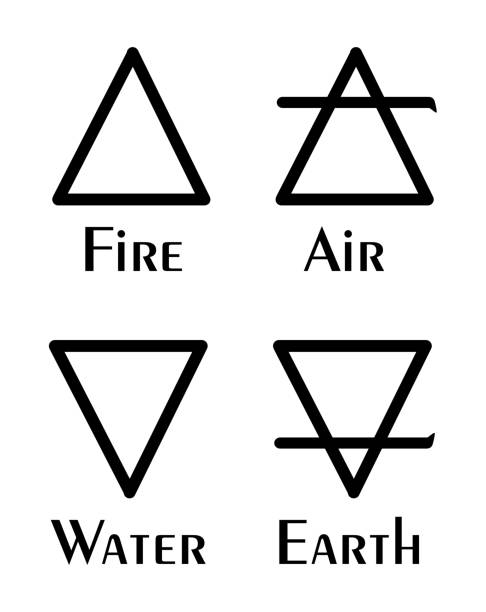Music Composition as Alchemical Process
Alchemy involves the manipulation of energy to transform physical and spiritual matter. Music has the power to transform the listener’s emotions, in a similar manner transform one’s mindset when used for meditation and even transform one’s heath when used for healing purposes, something we find in alchemy as well.
In this article I will share a few quotes from the article “Musical Alchemy: the Work of Composer and Listener” by Joscelyn Godwin, a British musicologist (Ph. D., 1969) and educated chorister:
“The composer and performer are the alchemists who help to transmute the Earth by making its substance and souls resonate with echoes of the heavenly music. In so doing, these earthly echoes also become audible in Heaven, and the gulf between the two thereby closes by another hairsbreadth. This is the accomplishment of the Great Work of musical alchemy which, like alchemy proper, aims toward the redemption of all Nature as well as to the reunion of Man with his higher self.“
This is how I have always felt about composition and performing, and why music should have real meaning and purpose beyond entertainment purposes.
Joscelyn mentioned: “… making its substance and souls resonate …“
Some alchemists believed that musical tones and rhythms could be used to manipulate or direct energy. They believed that certain musical tones and rhythms could be used to invoke or evoke certain metaphysical entities. This was done by playing certain notes and rhythms in specific combinations to create a vibration that would resonate with the desired metaphysical entity. The term for that phenomenon in music is ‘sympathetic resonance‘, a topic I have written about before on Roel’s World in various blog articles.
This is why I am in particularly fond of acoustic instruments. When you play your instrument, you set substance (your instrument) in motion and with it transfer that motion outwards, into the world and universe. In the past I have been fortunate to play various acoustic instruments (violin, saxophone, guitar, flute, clarinet, piano, percussion and drums). When you hold, or better embrace, an instrument like saxophone, violin and guitar, you extend your aura (energy field) around your instrument and the instrument thus becomes part of your being. The vibrations generated by the instruments, sympathetically resonating with the sonic source (by example a reed on saxophone or strings on violin and guitar), is passed from the instrument bodies onto your own. With the saxophone and violin, as well as with your voice, this experience is even stronger. The vibrations are resonating in your skull within the cranial fossa and the intracranial space, they act like small resonance chambers. Naturally these cavities aren’t empty like the resonance chamber (body) of the acoustic guitar, or violin. Nonetheless, sound vibrations do not only set molecules in air in motion, but in denser matter, link liquids and even harder materials like bone and stone as well. The effect of soundwaves on liquids is clearly demonstrated through Cymatics. This though is another subject. On a slightly less intense way, the listener is also (literally and figuratively) ‘touched’ by the vibrations generated by instruments (or other sonic sources).
Joscelyn mentioned: “… resonate with echoes of the heavenly music.”
That might sound somewhat familiar to anyone familiar with the “Music of the Spheres“, and for good reason.

In short, Musica Universalis (literally universal music), also called Music of the Spheres or Harmony of the Spheres, is an ancient philosophical concept that regards proportions in the movements of celestial bodies as a form of musica (the Medieval Latin term for music). These “movements” are not usually thought to be literally audible music, but a harmonic, mathematical concept. The relative distance between the planets of our solar system is similar to the ratios of Just Intonated musical intervals. As Above (ratios of planetary distances), So Below (ratios of tone distances, their intervallic relationship).
In another Roel’s World article (about Tone Zodiacs) I wrote a little more about Music of the Spheres, if you are curious, feel free to have a look.
The interesting thing is that in ancient times people believed that the musicians were gifted the talent to receive music from “above”. It wasn’t the musician who was the author of the music, it was “God-given”. Music played mostly a ceremonial role. The most important musical interval was the Fifth, bringing “Heaven” (‘voiced’ by all intervals large then the Tritone) into the Earthly realm (‘voiced’ by all intervals smaller than the Tritone). In music the Thirds are expressions of the self (minor 3rd = introvert/Introspection and Major 3rd = extrovert/extrospective). The Thirds in that era played no important role. Music was not there to express oneself, but as the voice of the cosmos expressing itself. The Fifths don’t “lead” the listener to the personal experiences (through the 3rds) of the performer(s), but jumps further down the scale to the Unison (first degree), the “lower self” and the “instincts”, something Sigmund Freud called the “id”. The octave on the other hand represents the ‘higher self’. If you find this an interesting topic, perhaps you like another article I wrote: The Functions of the Intervals.
Joscelyn continued: “In order to undertake this work, the true composer, like the alchemist, does not choose his profession: he is summoned to it by a call that cannot be ignored. To illustrate this I turn to Rudolf Steiner, in whom no one can fail to recognize yet another witness to the origin of music in the Imaginal World.“
Steiner explains that in deep dreamless sleep everyone revisits the true home of the soul. But whereas most people retain only a feeling of peace as a memory of the dreamless state, the initiate remains fully conscious and perceives a world of extraordinary colours and tones.
Steiner mentioned: “Der Musiker hingegen zaubert eine noch höhere Welt, er zaubert die devachanische Welt in die physische hinein. Tatsächlich sind die Melodien, die Harmonien, die zu uns aus den Werken unserer großen Meister sprechen, richtige Abbilder der devachanischen Welt. Wenn irgendwo wir einen Schat- ten, einen Vorgeschmack der devachanischen Welt zu empfangen ver- mögen, so ist es in den Melodien und Harmonien der Musik, in ihren Wirkungen auf die menschliche Seele.“
Translation: “The musician, on the other hand, conjures an even higher world, he conjures the devachanic world into the physical one. In fact, the melodies, the harmonies that speak to us from the works of our great masters are true images of the devachanic world. If somewhere we can receive a shadow, a foretaste of the Devachanic world, it is in the melodies and harmonies of music, in their effects on the human soul.“
~ 2nd Lecture on 12 November 1906, Berlin, published in Rudolf Steiner, Das Wesen des Musikalischen und das Tonerlebnis im Menschen, (Domach, Rudolf Steiner Verlag, 1975), p.25
Not all artists and composers have both the memory of that realm and the skill to embody that memory. That privilege to conceive the progeny of the Gods, is called ‘the Philosopher’s Egg‘ by the alchemists.
“That which is Philosophical is not visible, but may become visible by condensation.” ~ Artofferus (Arthur Fehres)
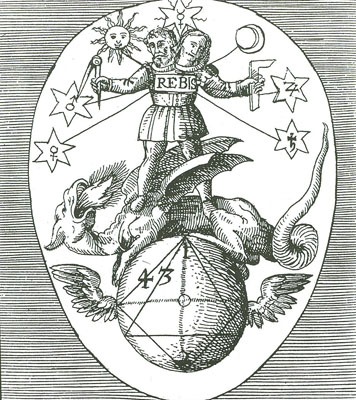
Music and sound, like the Philosophical, is also not visible, but may become visible through (sympathetic) resonance.
It is interesting to use the Philosopher’s Egg as symbol for the unique qualities and processes that makes one a “true composer” (Joscelyn Godwin) or a “great master” (Rudolf Steiner).
In this article I will not explain all the symbolism visualized in the image of the Philosopher’s Egg, I like to focus the symbols I feel could also be meaningful in the language of music.
The Philosopher’s Egg, composed of the Tria Prima (Salt, Sulfur & Mercury, or body, soul & spirit), is considered to be a form of the Philosopher’s Stone. The ‘Tria Prima’ of music would be: Rhythm, Harmony & Melody.
“The Philosopher’s Stone” might sound familiar to all who enjoy watching fantasy movies … does Harry Potter ring a bell?
Symbol of the Philosopher’s Stone

The “Deathly Hallows”, a symbol used in Harry Potter and the Philosopher’s Stone bears similarities, the circle in that fictive symbol represents the Philosopher’s Stone.
In the Harry Potter movies a lot more alchemy symbolism can be found. The website harrypotterforseekers.com has an entertaining article about it. Once you have read it, you will watch the movies with other eyes.
Symbol of the “Deathly Hallows”
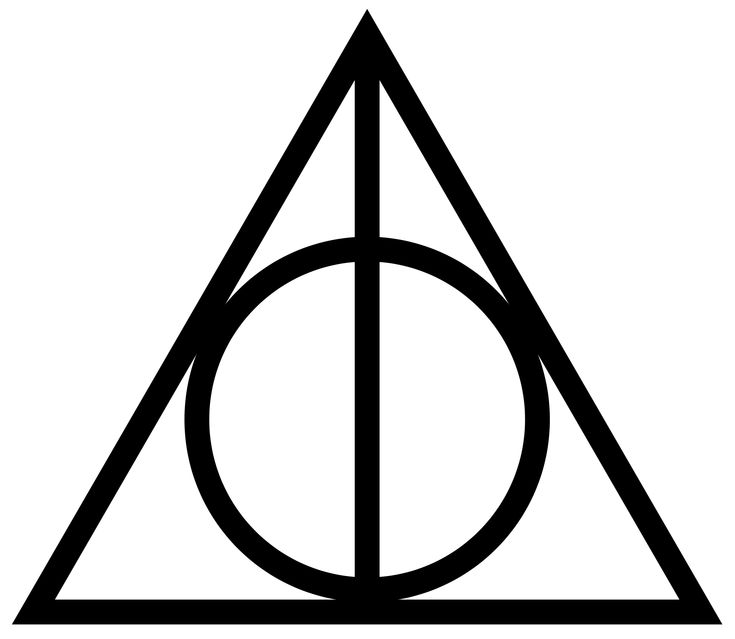
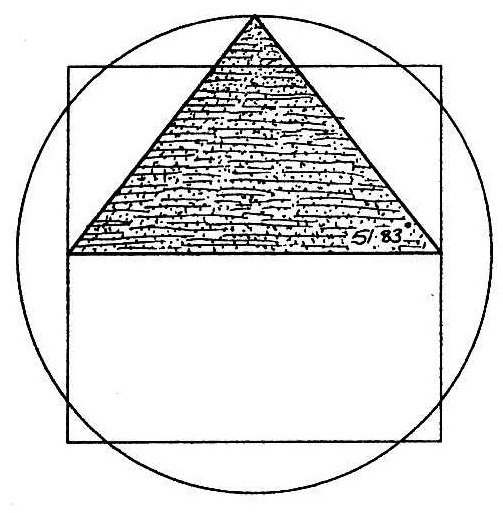
The combination of circle, trine and square is not exclusively related to the Philosopher’s Stone.
It can be found in “Squaring the Circle“, a problem in geometry first proposed in Greek mathematics, as well.
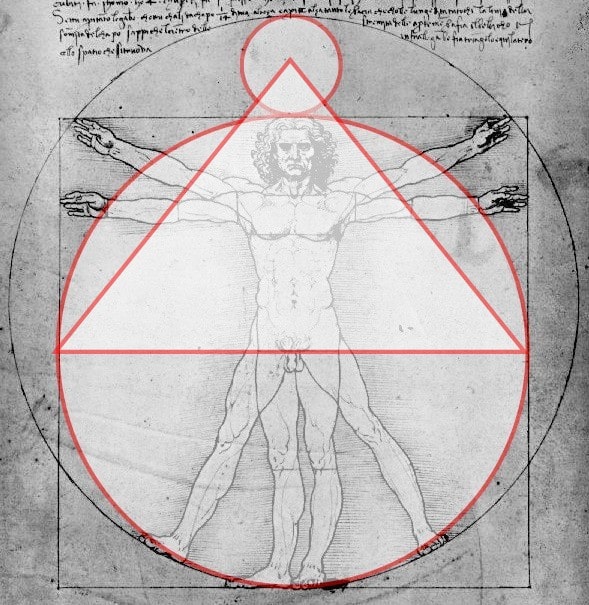
If you have visited my blog before and read my articles about Music and Geometry you must have seen those geometric shapes as well, but then in relationship with music. Both with alchemy and music symbols pay an important role. The same symbol might mean different things to different people in different situations, sometimes they may bears some semblance. That partly depends on if one knows the ‘language’ the symbols belong to. Both alchemy and music have unique symbols and language, only understood by those who have studied it and ‘speak’ the language.
3 & 4
In the image of the Philosopher’s Egg you see within the square and trine a 4 and 3. There is more to these numbers then just the number of sides and corners of the square and trine. In alchemy triangles are used in various symbols, the most important: the 4 elements (and Aether, the 5th) and the symbol of Sulfer (together with mercury and salt, they make up the Three Primes, or Tria Prima, the 3 primes could be thought of as points of a triangle. Triangles are also used in the symbols for Phosphorus, Crocus of Iron and Arsenic.
One of the tools of a composer and musician is the Tone Circle, the most common are the Chromatic Circle (left) and the Circle of Fifths (right).
Within the Tone Circles musical intervals and Chords can be visualized with geometric shapes. I like to highlight two geometric shapes in particular, the trine and the square.
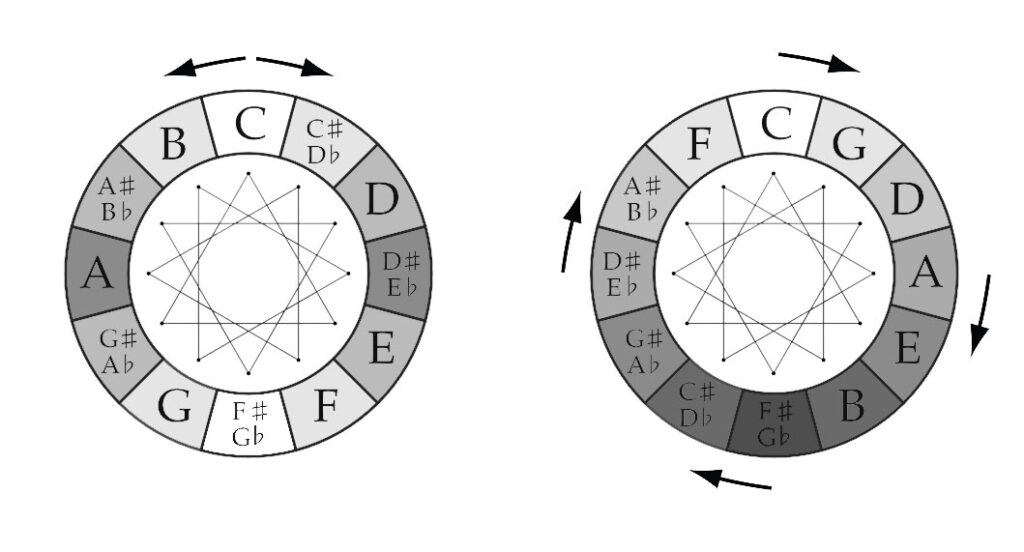
4 Trines: Major Third (int.) & the Augmented Triad (chord).
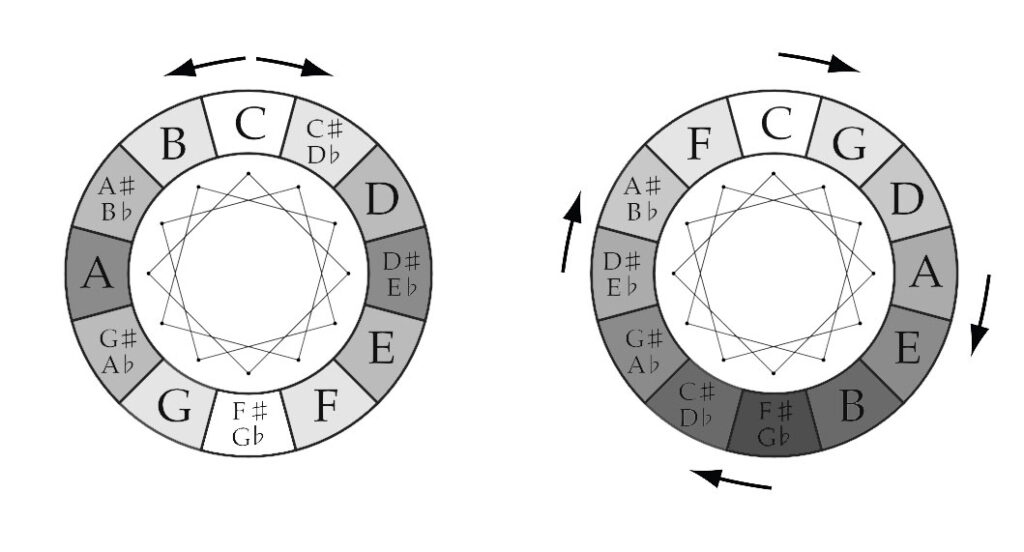
3 Squares: Minor Third (int.) & the Diminished 7 Chord.
7 (3+4)
7 is a very special number in the Alchemy. In alchemy, there are 7 metals (in the image of the Philosopher’s Egg reprecented by Sun, Moon and 5 stars), 7 heavenly bodies (7 classic planets), and 7 organs of the body.
In music 7 is also an important number. There are 7 Diatonic Modes. The diatonic scales have 7 different tones (Heptatonic scales). With a little imagination, you could see the resemblance between the musical scale and 7 metals. We could by example start with the lowest scale degree “Unison” and lead (or Saturn), followed by the “Second” and Tin (Jupiter), the “Third” and Iron (or Mars), the “Fourth” and Copper (Venus), the “Fifth” and Quicksilver (Mercury), the “Sixth” and Silver (Moon) and last but not least, the “Seventh” and Gold (Sun). The tones of the scale rise in pitch, the metals rise in quality.
With intervals one tone leads to the other (as I explained in my article The Functions of the Intervals). This movement also happens within harmonic progressions. This progression is called “The Sequence Of Falling Fifths” (a sequence of 7 steps), also known as (extended) Turnaround.
This Septagram visualizes the “harmonic progression” or “chord progression“, a succession of musical chords, or cadence. This chord progression is the foundation of harmony in the Western musical tradition.
The numeral sequence of the falling (descending) Fifths goes as follows:
4 – 7 – 3 – 6 – 2 – 5 – 1
Musicians and composers generally prefer using the Roman numerals instead though:
IV – VII – III – VI – II – V – I
In C Major we get the following chord sequence:
F Major – B diminished – E minor – A minor – D minor – G Major – C Major.
You could say that those the 7 cadential chord progression of the Sequence of the Falling Fifths is alike the 7 stages of Alchemy (Calcination, Dissolution, Separation, Conjunction, Fermentation, Distillation, and Coagulation), where with alchemy the goal is to reach and complete the final stage (Coagulation) before the process is done, with music those 7 harmonic movements is all to resolve to the tonic.
Now, the full cadence of 7 progressive movements are hardly ever played in full. Most musicians only use the last few movements, the II-V-I (a common cadence in a variety of musical genres), or the III-VI-II-V-I (also called “turnaround”) is a little “fancier”, it just takes 2 steps longer to resolve, is very common in Jazz, but also in some pop songs.
It was hard to find the complete cadence on youtube, but here is one without the first of the 7 movements in the sequence (the 4th degree of the tonality). You can hear how every chord solves into the next, and finally resolving at the 1ste degree, the Unison, the root of the tonality, in this video that is C Major.
Allright, back to alchemy …
Joscelyn wrote: “The composer and performer are the alchemists who help to transmute the Earth by making its substance and souls resonate with echoes of the heavenly music.“
If you look at music composition & production as an alchemistic process of transmutation, what would happen during the different alchemistic stages?
Alchemical authors sometimes elaborated on the three or four color model by enumerating a variety of chemical steps to be performed. The origin of the four phases can be traced at least as far back as the first century. Later these were often arranged in groups of 7 or 12 and even 14 stages are mentioned in the Magnus Opus (Great Work). I have chosen to use 7 alchemistic stages.
THE 7 ‘ALCHEMISTIC’ STAGES IN MUSIC COMPOSITION & PRODUCTION
1 – Calcination – In alchemy this is depicted as the burning of the Prima Materia into ash.
Prima Materia. This beginning stage refers to the breaking of our attachments to the worldly. Along the journey of life, it’s easy to get lured into the rat race – we seek wealth, but also status, fame, prestige, things to feed our ego and our own perceptions of our identity. This stage asks us to humble ourselves – fire sparks the journey into the self.
→ In this stage of the creation of music one wonders what the real goal and purpose is of the still to form creation. What is the real musical story to tell, why should it be told and who will the story be told to? One imagens the core, base structure, perhaps a sonic atmosphere, the keywords and phrases if with vocals … with other words, the essence.
2 – Dissolution – The chemical process of dissolution is to take the ashes from calcination and dissolve it in water.
Here we are plunged into the waters of the unconscious. The water in this stage asks us to let go, and to release the structures and the systems that define our perceptions of ourselves.
→ In this stage one takes the remnants from the first stage and add fluidity to the process. To liquify the process could be seen as experimentation or improvisation (a common process with Jazz as with Classical Music), to add variations to what initially was imagined, without concrete structure or concept. Noted material or Cantus Firmus (“fixed melody”) could be used as base for a polyphonic composition, or like Basso Continue a continuous bass line could form the base for improvised harmonies, in order to explore beyond the boundaries of what was initially imagined during the Calcination. In this stage it is not required to come with a solid idea yet, fiddling around and making some notes is fine, the process may be messy if needed.
3 – Separation – In this stage, the alchemist separates and filters the products of dissolution.
Now that we have unearthed the unconscious materials that we once discarded, we can also now sift through it to really find parts of it that can help us grow.
→ In this third stage one needs to sift through it all and select those parts (melodies, harmonies and rhythms) from the still fluid, improvised ideas created during the dissolution phase, in order to prepare for the next phase.
4 – Conjunction – Here the alchemist combines the elements deemed worthy in separation into a new substance.
It is at this moment where we re-integrate. Unconscious and conscious come together. Here the alchemist is at peace with both the perceived “darker” aspects of the self, and the mask that they need to wear when interacting with the world.
→ The composer merges the selected parts (melodies, harmonies and rhythms). With it the composer tries to find a proper balance between his own emotional connection to the creation as well as trying to create a sound that might appeal to the targeted audience as well.
5 – Fermentation – Living organisms are introduced to the substance to continue its breakdown.
Fermentation is essentially, all about testing this newly integrated self. We test ourselves through trials and tribulations, through the natural swings that life provides us. The idea here is that we must go through the darkest of night in order to see the dawn, and when it arrives, it brings with it something explosively beautiful.
→ From the 4 composition phases (1-4) we now enter the 3 production phases (5-7). Once the composition has been completed (and perhaps or a score has been made) the scores for all participating musicians are handed out. When all musicians gather to rehearse the music, the composition is being put to the test for the first time. Naturally one can’t expect the composition to be performed perfect at once. Depending on the complexity of the musical story, the musicians need study rigorously and the first rehearsal with the complete formation could be tough. Nonetheless, once all pieces fall in place, it’s time to record the piece and the true beauty of the composition is sonified.
6 – Distillation – In distillation, the solution is then boiled and condensed in order to purify the substance.
To prepare for the final stage, we need to purify the spirit to make sure that it is free from any destructive forms of ego. Here we are planting the seed for the unborn, trans-personal self – one that is free from the distinctions of the collective and the individual. To help it grow, one has to nourish it – which can be done with various forms of contemplation, spiritual ritual or meditation.
→ Next up in the production phase is the edit and mixing stage. The recorded material is checked to make sure there are no more imperfections and all the individual instrument tracks are mixed together into a well balanced piece of music.
7 – Coagulation – The substance is crystallized into a solid state.
Here, there is the meeting between matter and spirit, inner and outer, the union of dualities. It is at this stage where the spirit has become self aware – it perceives itself, and it sees and understands that the inner world and the outer world are not different, but reflections of each other.
→ The final stage of the production processes is the mastering session. The purpose of this phase is to make sure all recorded material sounds as one and sounds well on various types of sound systems, ready to be send of to be pressed on vinyl, burned on disk or send in the right file format to the online music stores.
There are theories and studies that explore the relationship between alchemy and music from a more technical perspective. For instance, one theory called the “Atorène Music Theory Course for Alchemists” from 1981 (“Le Laboratoire Alchimique par Atorène“) [ part 1 | part 2 ] presents the idea that there are musical intervals and notations associated with the alchemical process. It suggests that music can be used to understand the principles of alchemy and its transformative nature. A paper by Ioan Mihai Cochinescu discusses the connection between alchemy and music in the spiritualistic musical composition of Michael Maier, called Atalanta Fugiens.
In some of the historic alchemical publications the reference to music and musical instruments is made by various alchemists. You can read more about that in this article here on Roel’s World.
Perhaps other Roel’s World articles you might enjoy reading as well?
The Functions of the Intervals | Music and Geometry

